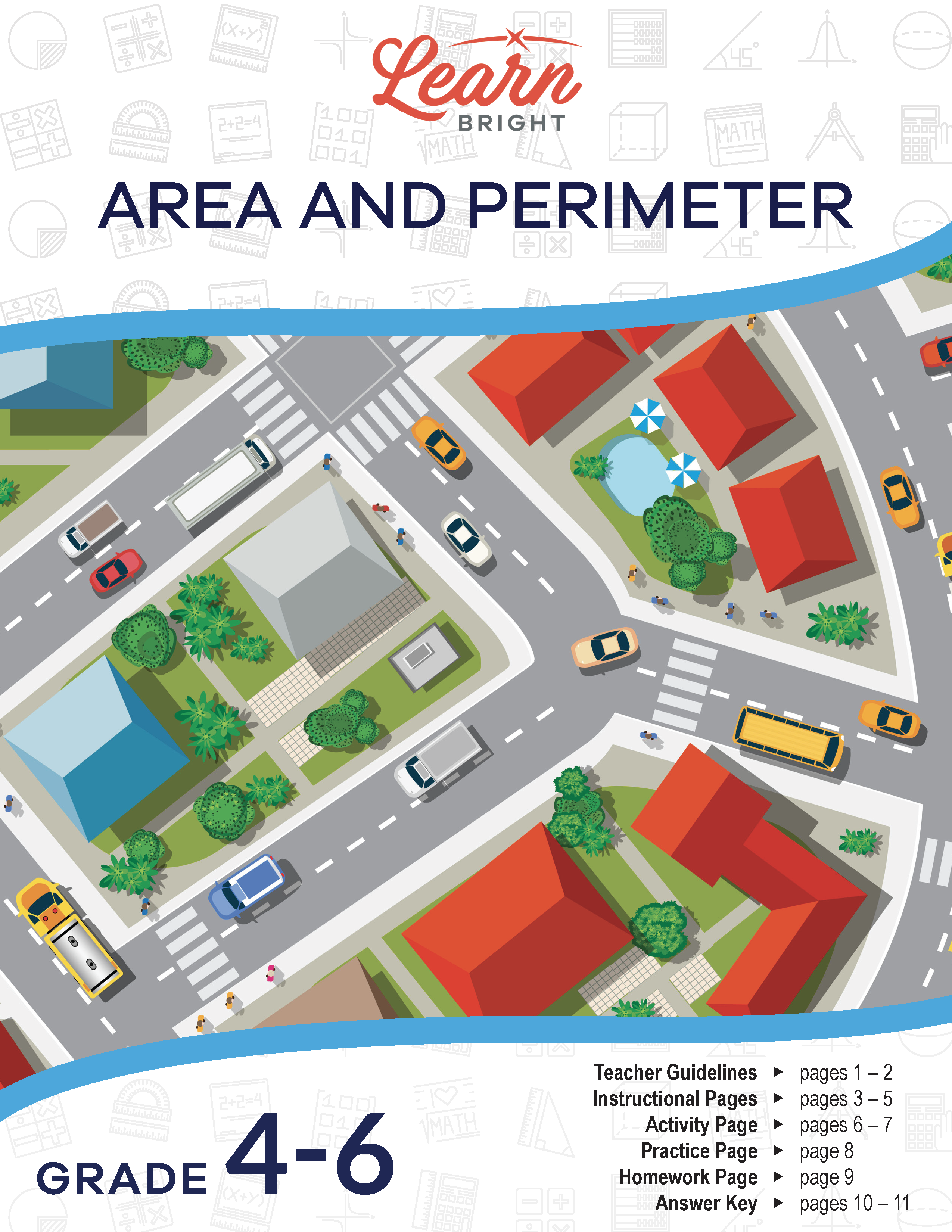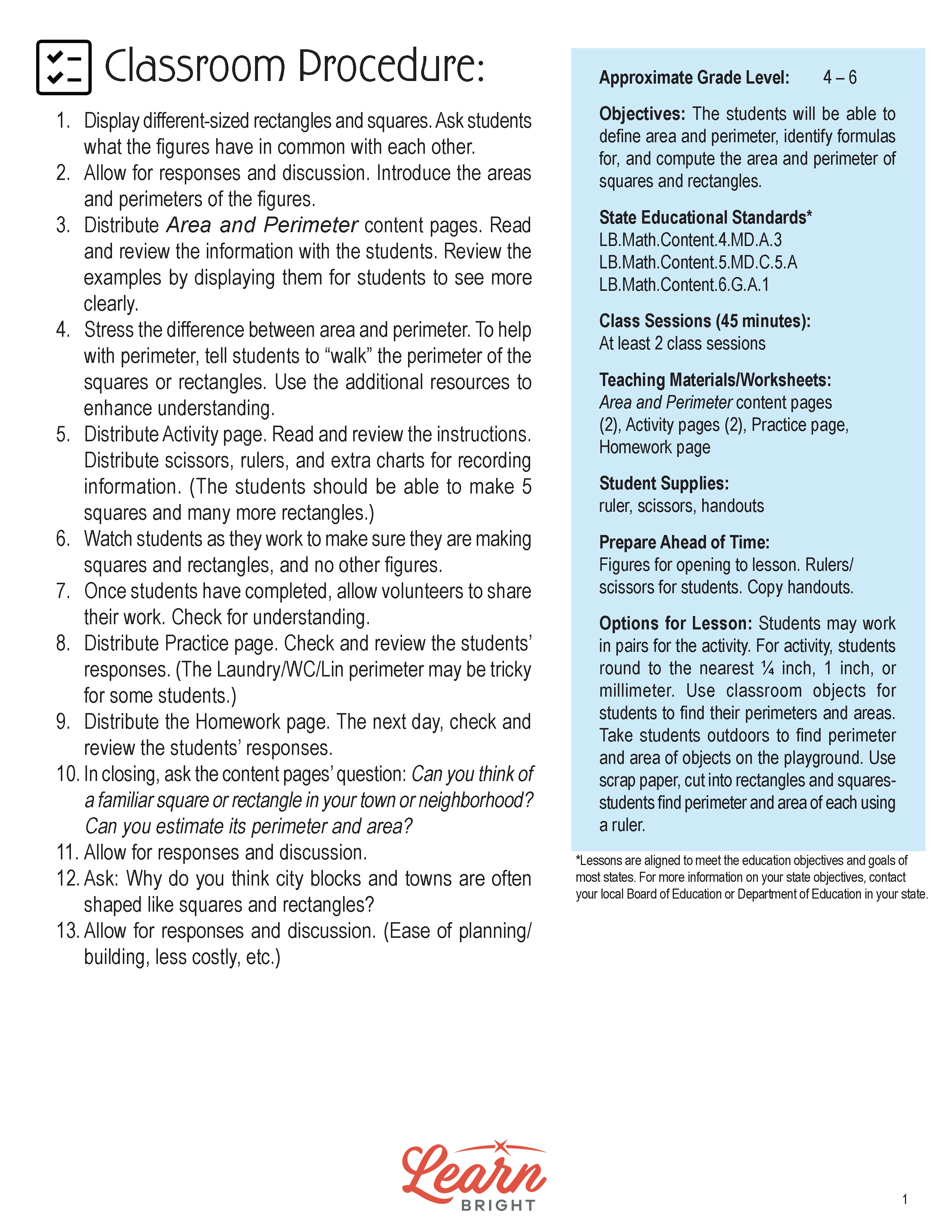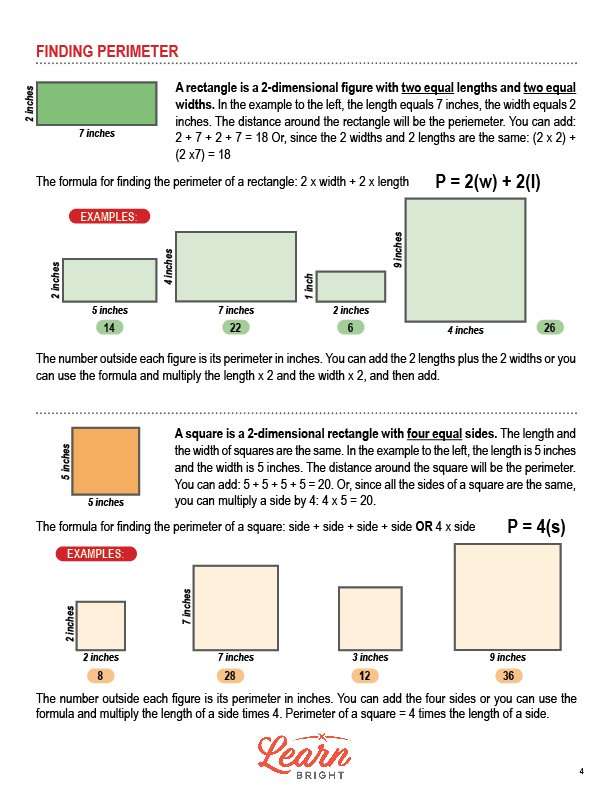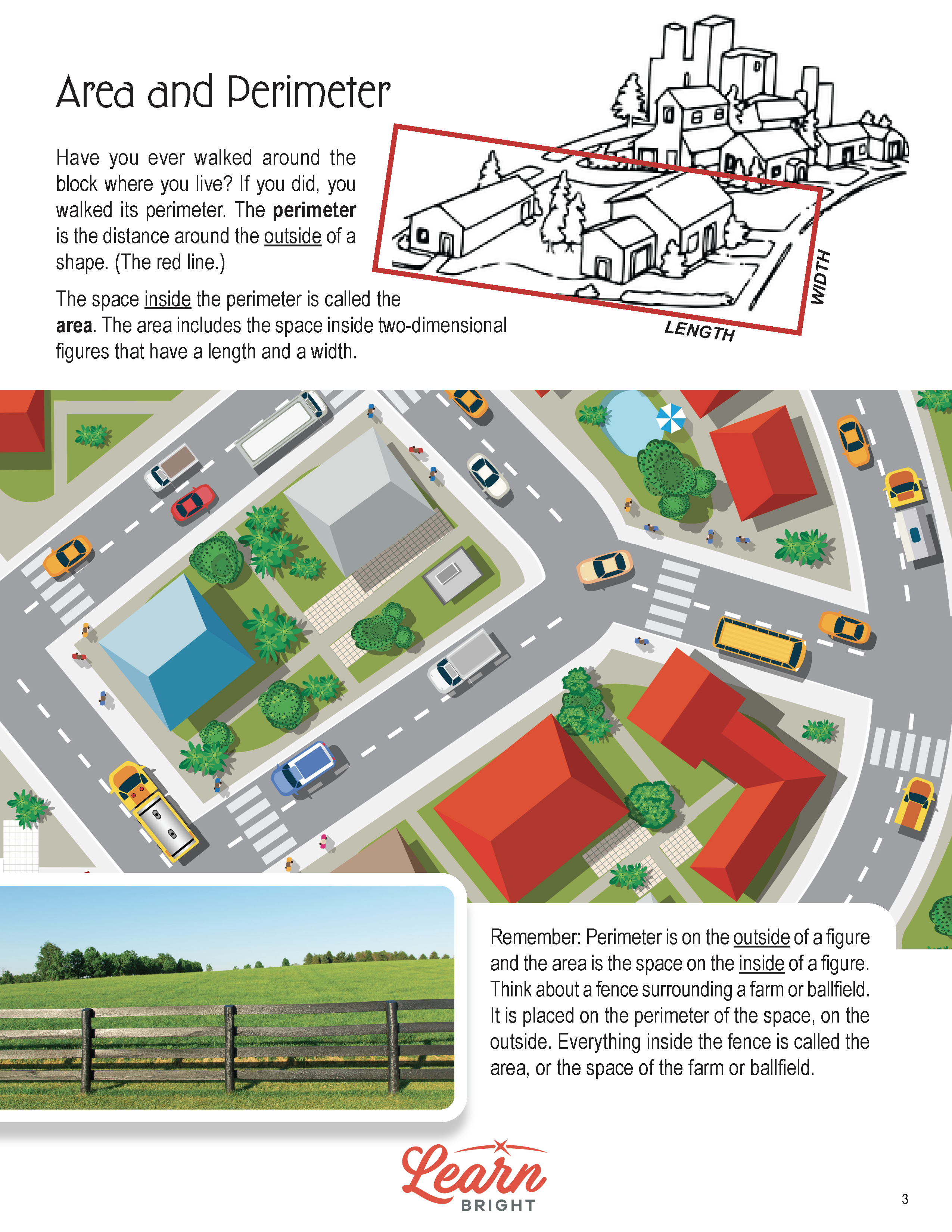Description
What our Area and Perimeter lesson plan includes
Lesson Objectives and Overview: Area and Perimeter introduces the definition of area and perimeter, as well as the formulas for calculating the area and perimeter of squares and rectangles. With ample opportunities for experiential practice and additional resources to ensure understanding, students solidify the conceptual and formula differences between calculating perimeter and computing area. At the end of the lesson, students will be able to define area and perimeter, identify formulas for, and compute the area and perimeter of squares and rectangles. This lesson is for students in 4th grade, 5th grade, and 6th grade.
Classroom Procedure
Every lesson plan provides you with a classroom procedure page that outlines a step-by-step guide to follow. You do not have to follow the guide exactly. The guide helps you organize the lesson and details when to hand out worksheets. It also lists information in the blue box that you might find useful. You will find the lesson objectives, state standards, and number of class sessions the lesson should take to complete in this area. In addition, it describes the supplies you will need as well as what and how you need to prepare beforehand. The supplies you will need for this lesson are rules, scissors, and the handouts. To prepare for this lesson ahead of time, you can find figures for the lesson opening, gather the supplies, and copy the handouts.
Options for Lesson
Included with this lesson is an “Options for Lesson” section that lists a number of suggestions for activities to add to the lesson or substitutions for the ones already in the lesson. An optional addition to the lesson activity is to have students round to the nearest 1/4 inch, inch, or millimeter. You can also have students find the perimeters and areas of various classroom objects. For an additional activity, you could take your students outside and have them find the perimeters and areas of various playground objects. Finally, you can cut rectangles and squares out of scrap paper and have students find their perimeters and areas using a ruler.
Teacher Notes
The teacher notes page includes a paragraph with additional guidelines and things to think about as you begin to plan your lesson. It notes that this lesson only deals with squares and rectangles. Students will learn to find the area and perimeter of other shapes in subsequent lessons. This page also includes lines that you can use to add your own notes as you’re preparing for this lesson.
AREA AND PERIMETER LESSON PLAN CONTENT PAGES
Area and Perimeter
The Area and Perimeter lesson plan includes three pages of content. The lesson begins by stating that if you’ve ever walked around the block where you live, you’ve walked its perimeter. Perimeter is the distance around the outside of a shape. Area is the space inside the perimeter, and includes the space inside of two-dimensional figures that have a length and width. Perimeter is on the outside and area is the space inside. For example, if a farm has a fence, everything inside of the fence would be that farm’s area.
Finding Perimeter
Next, students will learn how to find the perimeter of a shape. Rectangles are two-dimensional figures that have two equal lengths and two equal widths. To find the perimeter of a rectangle, you multiply both the length and the width by two and add them together. The lesson includes example problems to illustrate this. Squares are two-dimensional rectangles that have four equal sides. To find the perimeter of a square, you multiply the side measurement by four. The lesson also includes several examples of this.
Finding Area
Finally, students will learn how to find area. There are three steps for finding the area of a rectangle. The first step is to find the length, the second is to find the width, and the third is to multiply the length and the width together. The lesson includes some helpful examples. There are two steps for finding the area of a square. First, you find the length of one side. Next, you square the side, which means that you multiply it by itself. The lesson also includes examples of this.
To summarize, perimeter is the distance around the outside of a shape and area is the amount of space inside of a shape. You can measure these in inches, feet, yards, and more.
AREA AND PERIMETER LESSON PLAN WORKSHEETS
The Area and Perimeter lesson plan includes three worksheets: an activity worksheet, a practice worksheet, and a homework assignment. You can refer to the guide on the classroom procedure page to determine when to hand out each worksheet.
MEASURING FIGURES ACTIVITY WORKSHEET
For this activity, students will first cut out all of the black lines on page two of the activity. They will then arrange the lines to create as many squares and rectangles as they can. Next, they’ll measure the lengths and widths of each square or rectangle, rounding to the nearest 1/2 inch or centimeter. They will also sketch each square or rectangle in the space provided. Finally, they will calculate the perimeter and area of each figure they create.
Students may work in pairs for the activity if you’d prefer.
COMPLETE THE CHART PRACTICE WORKSHEET
For the practice worksheet, students will look at a diagram of a floor plan of a house. They will then complete a chart that lists the perimeter and area of various rooms in the house.
AREA AND PERIMETER HOMEWORK ASSIGNMENT
The homework assignment asks students to answer various questions related to the lesson. These questions will help test students’ knowledge and understanding of the lesson material.
Worksheet Answer Keys
This lesson plan includes answer keys for the practice worksheet and the homework assignment. If you choose to administer the lesson pages to your students via PDF, you will need to save a new file that omits these pages. Otherwise, you can simply print out the applicable pages and keep these as reference for yourself when grading assignments.










